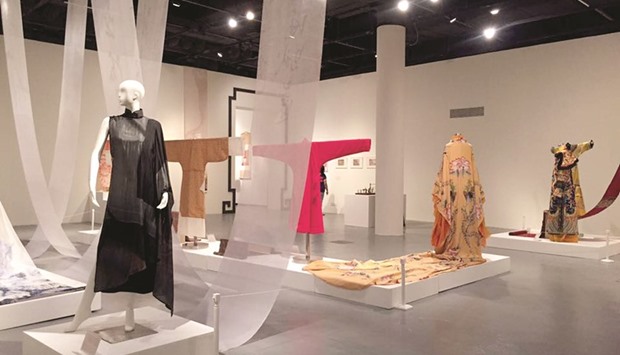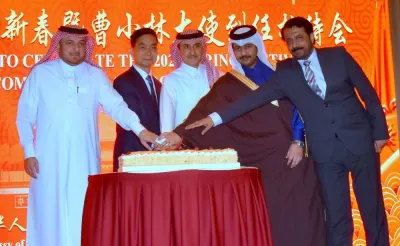In view of the ongoing Qatar-China 2016 Year of Culture and a series of related events and activities, the Qatar Museums (QM) is also urging the people of Qatar to embark on a ‘Chinese Treasure Trail’, so as to learn more about the “historic relationships which have shaped Chinese and Islamic art since the 9th century”.
Four months into the year, the Qatar-China Year of Culture has taken off to a flying start with the unveiling of, among other events, two major exhibitions – ‘What About the Art? Contemporary Art from China’, and ‘Silks from the Silk Road – Chinese Silk Art’. While the former is on until July 16, the fascinating Silks from the Silk Road will come to a close soon.
If you haven’t yet caught this exhibition at Building 10, Katara, do yourself a favour and visit. Reflecting the rich artistry of Chinese silk in terms of art, techniques and fashion design over thousands of years, the exhibition also provides insight into the Silk Road, which was a bridge for economic and cultural exchange between East and West. This exhibition includes 100 selected silk products and modern artistic works of silk garments, as well as other accompanying exhibits such as ceramic tea sets and tea works.
New York-based Chinese artist Cai Guo-Qiang, who is the curator of “What about the Art?” exhibition, recently told Community about the significance of Chinese art as an entity, “It is after reviewing the works of more than 200 artists that we narrowed down to about 25 artists. I visited their studios and eventually got it down to 15 artists, whose works we see here in Doha’s “What About the Art?” exhibition. Chinese art is in itself quite a popular theme. There have been over 200 to 300 exhibitions on this theme, which is in fact, impressive, because very rarely can a country in this world can imagine the art of its country [to be thematically exhibited].”
That somewhat puts into perspective Qatar Museums asking people, via their Years of Culture portal, to explore the ‘Chinese Treasure Trail’ by taking the self-guided walking tour through the permanent galleries at the Museum of Islamic Art so as to explore some of the remarkable Chinese objects in the collection. “These objects reflect both the trade and commerce between the Islamic world and China via the ‘Silk Road’ as well as the exchange of artistic ideas and techniques. Porcelain, textiles and paper were traded to the Middle East whilst glass, minerals and spices were traded back to China,” the QM’s Years of Culture says, explaining the Chinese Treasure Trail.
Drawing attention to the cross-cultural influences, Years of Culture explains, “Islamic artistic influence in China was at its height during the first centuries following the Islamic conquest after the 7th century. The influence of Chinese art in the Islamic world was mainly reflected in ceramics and other small arts. Since the earliest trade with China, potters from the Islamic world tried to replicate the fine white-bodied ceramics they so admired.”
Ceramics in the Middle East were usually thick but relatively fragile and early attempts to recreate Chinese porcelain focused on the use of a white glaze, Years of Culture points out and says, “Several centuries later the Islamic craftsmen developed fritware, a paste with small quantities of clay and glass which, when fired, imitated the white porcelain of China. In China, the cobalt blue mined in Iraq provided the stunning colours for their blue and white ceramics which were then traded back to the Islamic world.”
As for the silk trade, it reached as far as the Indian subcontinent, the Middle East, Europe, and North Africa and the collective routes came to be known as the Silk Road. The “Silks from the Silk Road” exhibition provides a unique insight into silk, by showcasing 100 selected silk products and modern artistic works of silk garments, as well as other supplementary exhibits such as ceramic tea sets and tea works.
Shining a light on the rich silk heritage, China National Silk Museum, in collaboration with QM, has put out a selection from its ancient and modern Chinese Silk treasures that demonstrate the artistry of Chinese silk-making culture and industry at Building 10, Katara, which is open until May 9.

Silks from the Silk Road - Chinese Art of Silk is the first exhibition that travels from China National Silk Museum to Qatar.


